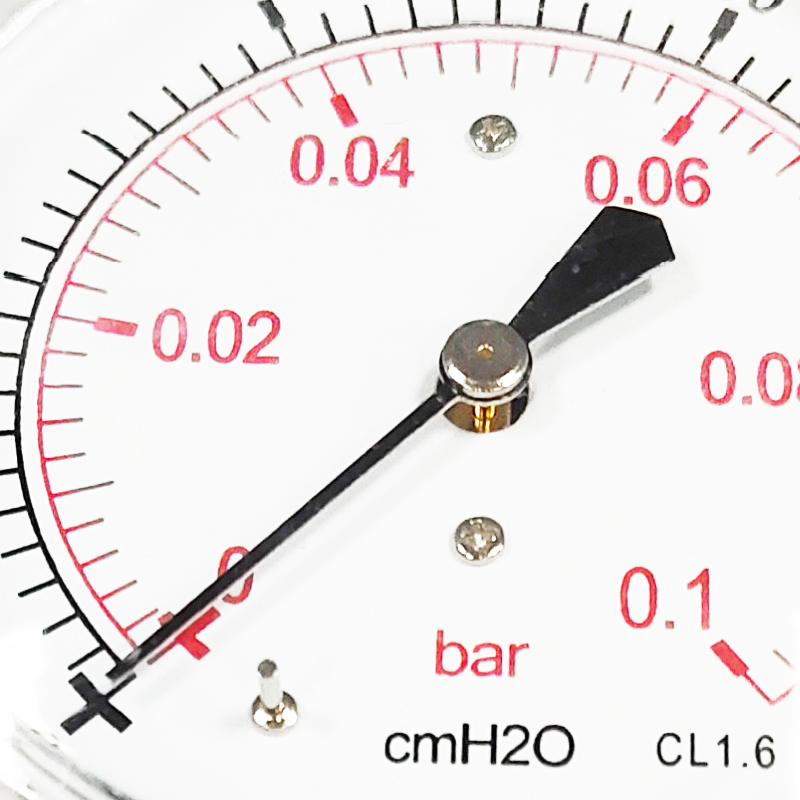
9 月 . 25, 2024 16:40 Back to list
differential pressure gauge assembly
Differential Pressure Gauge Assembly An Overview
Differential pressure gauges are critical instruments used in various industrial applications to measure the difference in pressure between two points in a system. This capability is essential for monitoring processes, ensuring safety, and maintaining the efficiency of operations in sectors such as HVAC, process manufacturing, and hydraulic systems. The assembly of a differential pressure gauge involves various components and considerations, which are crucial for its accurate performance and reliability.
Components of a Differential Pressure Gauge
A typical differential pressure gauge assembly comprises several key components the sensing elements, a pressure chamber, a transmission mechanism, and a display unit.
1. Sensing Elements At the heart of the differential pressure gauge are the sensing elements, often consisting of diaphragm or Bourdon tube technology. These elements are designed to respond to the differential pressure applied across them. A diaphragm, for instance, flexes in response to pressure differences, translating the mechanical movement into a readable output.
2. Pressure Chamber The pressure chamber houses the sensing elements and is designed to withstand the fluid pressures encountered in the specific application. It must be made of materials that can resist corrosion, especially in processes dealing with corrosive fluids, which is why stainless steel is often used.
3. Transmission Mechanism The transmission mechanism converts the displacement of the sensing elements into a readable format. This can be mechanical, where gears and levers amplify the movement and transfer it to the display, or electronic, where sensors produce an electrical signal that is then processed.
4. Display Unit The display unit can be analog, featuring a needle gauge with specific pressure markings, or digital, providing a numeric readout. Digital displays often come with enhanced functionalities such as data logging, alarms, and connectivity options for integration into broader monitoring systems.
Assembly Process
The assembly of a differential pressure gauge requires precision and attention to detail. The process typically involves the following steps
1. Quality Check of Components Each component must be inspected for quality and conformity to specifications. Defective components at this stage can lead to inaccuracies in pressure readings or failures in operational contexts.
differential pressure gauge assembly

2. Installation of Sensing Elements The sensing elements are installed within the pressure chamber. It is vital to ensure proper sealing to prevent fluid leaks, which could skew measurements.
3. Integration of the Transmission Mechanism Following the installation of the sensing elements, the transmission mechanism is integrated. This step may require calibration to ensure the output correlates accurately with the pressure applied.
4. Connection of the Display Unit The last step is to connect the display unit to the rest of the assembly. Calibration is performed again at this stage to confirm that the display reflects accurate readings, often engaging the gauge under controlled pressures for testing.
Importance of Calibration
Calibration of differential pressure gauges is a crucial step in ensuring their accuracy and reliability. Regular calibration should be performed in accordance with industry standards to account for any drift in accuracy that may occur over time due to wear and thermal effects.
Proper calibration not only enhances measurement accuracy but also significantly impacts system safety and efficiency. In many industries, having reliable differential pressure measurements is essential for process control, troubleshooting, and equipment maintenance.
Applications of Differential Pressure Gauges
Differential pressure gauges find applications in diverse fields. In HVAC systems, they monitor air pressure in ducts to ensure efficient airflow and system performance. In chemical processing, they are used to monitor filter conditions and prevent over-pressurization that could result in operational hazards. The oil and gas sector also uses these gauges to manage flow rates and ensure safety in various operations.
Conclusion
The differential pressure gauge assembly is an indispensable tool that drives efficiency, safety, and reliability across various industries. With advancements in technology, these gauges continue to evolve, offering enhanced functionalities and greater precision. The careful assembly and calibration of these instruments are paramount in ensuring they meet the stringent demands of today’s industrial environments. As industries continue to advance, the role of differential pressure gauges will undoubtedly remain critical in ensuring optimal operational performance.
-
High-Quality Pressure Gauge on Fire Extinguisher - Reliable Water Fire Extinguisher Pressure Gauge Suppliers & Exporters
NewsJul.08,2025
-
High-Quality Water Pressure Differential and Gauge Kit Reliable Manufacturers & Competitive Quotes
NewsJul.08,2025
-
High-Precision Digital Diaphragm Pressure Gauge – Reliable Manufacturer & Competitive Quotes
NewsJul.07,2025
-
Wholesale Diaphragm Pressure Gauge Supplier - Premium Quality & Competitive Price
NewsJul.07,2025
-
Digital Diaphragm Pressure Gauge Reliable & Precise Measurement Top Manufacturers Quotes
NewsJul.06,2025
-
High Accuracy Piston Type Differential Pressure Gauge - Reliable Manufacturers & Competitive Quotes
NewsJul.06,2025
